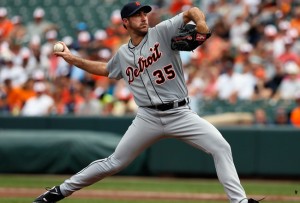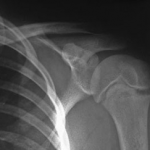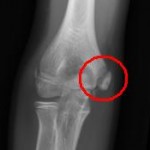Brian Schiff’s Blog
Injury Prevention, Sports Rehab & Performance Training Expert
So, one of my biggest pet peeves as a PT is seeing athletes hurt as a result of poor coaching and training. Overuse injuries provide lots of clients for my practice. While this is good for business, I would really like to help prevent these injuries. I need your help. It all starts with education and a willingness on the part of health and fitness professionals to advocate strongly for our young athletes.
Consider the following scenario: a 14 y/o freshman left-handed pitcher presents for rehab to recover from Little League Shoulder. He was hurt on the second day of his high school’s fall conditioning program. He was being forced to throw in excess of 200 feet. His exact words were, “I was sore after day one, but I felt my shoulder explode on the second day of the program.” Think this is a coincidence? Hardly.
Another player from the same school (a sophomore right hander) is also in my clinic recovering from an avulsion fracture of his medial epicondyle that he too suffered on the second day of the same throwing workout. I emailed the left-handed pitcher’s father with details about throwing biomechanics and how they decline with long distance throwing. I also expressed my concern over the coach’s aggressive throwing program. The father emailed back and said he too disagreed with the throwing program. However, the coach simply told him his son had “not been properly coached” prior to getting to his program. Are you kidding me? Look at the images below to appreciate the type of damage done by overzealous throwing programs.
Coaches need to be more accountable to their training programs and philosophies. Both of these players are missing no less than 3 months of baseball because the coach is clueless about the impact of aggressive long toss and how it may actually be detrimental to his players as opposed to actually improving their throwing technique/performance.
Click here for an article summary in JOSPT related to throwing biomechanics
So, how do we make a positive impact and prevent unnecessary injuries like the ones I have discussed? I feel we need to look at the following strategies:
- Educate parents and coaches through talks and seminars
- Network with high school athletic trainers to ensure they have some feedback/input with respect to preventive training philosophies as well as a direct pipeline to coaches
- Reach the athletes directly through arm care screenings, FMS evals and professionally directed throwing programs
- Team with high profile baseball players or coaches who understand the game at the highest level and will spread the message in a positive and constructive manner
- Participate in CEU course for coaches and present on throwing programs, shoulder strengthening and mobility training
Based on these two cases, I am brainstorming ways I can become more of a “voice” in the baseball community in my area. It is tough to convince pushy parents and misguided coaches that young kids don’t need to throw curveballs or that pitchers should probably not be forced to throw over 200 feet in hopes of increasing arm velocity. But, we need to step up and make a difference or more young kids will be suffering from tendinitis, Little League Elbow/Shoulder, labral tears or other overuse injuries.
Click here for an abstract reference with respect injury risk and innings pitched per year
As a father, coach, educator and physical therapist, my personal mission is to make a difference in the lives of those around me. I know many may simply be unaware that there is a better or safer way. As the emphasis on early specialization continues to grow in our country, now is the time to take action and help stop many of these injuries.

Photo from Bleacher Report
Shoulder surgery is a big concern for any professional pitcher. I am currently rehabbing two MLB pitchers (one from a labral repair and the other from a Tommy John procedure and obviously not JV pictured above). They are doing great so far in their early rehab, but time will tell if they make it back to their pre-injury pitching levels.
Overuse injuries in youth baseball players is always a huge concern I have. In fact, I speculate that early wear and tear may contribute to injuries seen down the road in HS, college or the pro ranks. I know from coaching and observing that more youth coaches need to familiarize themselves with pitch count guidelines and rest/recovery recommendations that Little League baseball now endorses.
As a sports physical therapist who sees 12 year-olds with RC problems and torn UCLs and as a father/coach of a 10 y/o left-handed pitcher, I have a strong passion and vested interest in the welfare of baseball pitchers. While research does not equate increased injury risk with throwing curveballs and sliders to date per se, both of my MLB clients advise against it until athletes turn 14 or 15.
For information on injury prevention and pitching guidelines for youth, check out this website:
http://www.asmi.org/research.php?page=research§ion=positionStatement
Today’s blog post focuses on outcomes following surgery for elite pitchers. The following information was just published in the Jul/Aug 2013 edition of Sports Health by Harris et al. based on literature review based on these outcome measures:
Primary = pitcher’s rate of return to sport (RTS) at the same level prior to injury
Secondary = rates of RTS regardless of level, performance upon RTS and clinical outcome scores
“Elite” was defined as throwing in at least one game in MLB, minor league (A, AA, or AAA) or all collegiate divisions. Six level I-IV studies were included with enrollment from 1976 – 2007, and there were 287 elite male pitchers who underwent shoulder surgery with 99% on the dominant throwing shoulder. Most pitchers (276) were professional with a mean career length of 6.58 years. Post-operative clinical follow-up within these studies was 3.62 years.
Primary diagnoses treated:
- RC tear = 120 (43%)
- Internal impingement = 82 (30%)
- Labral tear = 74 (27%)
Surgical procedures performed:
- Labral repair (157) or labral debridement (99)
- RC repair (29) or debridement (162)
- Thermal capsulorrhaphy (63)
- Subacromial decompression (42)
The statistics reveal more debridement of the labrum (61%) and rotator cuff (85%) versus repair. This is not necessarily surprising given the desire to minimize surgical intervention and loss of motion.
Return to Sport Data
- The overall rate of return to sport was low at 68%.
- Mean time to return to competitive pitching in a game situation was 12 months (range = 9 -17)
- 22% of MLB pitchers never pitched again in MLB
- Only 14% returned to competitive pitching in the same season as labral surgery
- No one returned to competitive pitching in the same season after rotator cuff surgery
- Reynolds et al reported a median of 2 seasons of pitching after debridement of partial thickness cuff tears
- Mazoue and Andrews reported a mean of 0.7 seasons pitching (range 3 innings to 3 seasons) after mini-open RC repair
Performance declined for the 3 seasons prior to surgery and then gradually increased for 3 seasons afterward, but generally did not reach pre-injury levels.



